The HTC One M9 Review: Part 1
by Joshua Ho on March 22, 2015 7:00 PM EST- Posted in
- Smartphones
- HTC
- Qualcomm
- Mobile
- Snapdragon 810
- One M9
GPU Performance
Although CPU is often the focus of any given SoC, it’s important to avoid using a weak GPU as even cases as simple as web browsing or navigating through a UI can rely on the GPU for rendering, in addition to the common use cases of gaming. It’s also possible that GPUs can be leveraged for compute, which has great use for cases like image and video processing. To this end, the Snapdragon 810 has an Adreno 430 GPU that runs at 600 MHz, similar to the Snapdragon 805’s Adreno 420. As a result, all of the improvements we’re seeing from the Adreno 420 to the Adreno 430 are solely the result of architecture and driver improvements rather than clock speed increases.
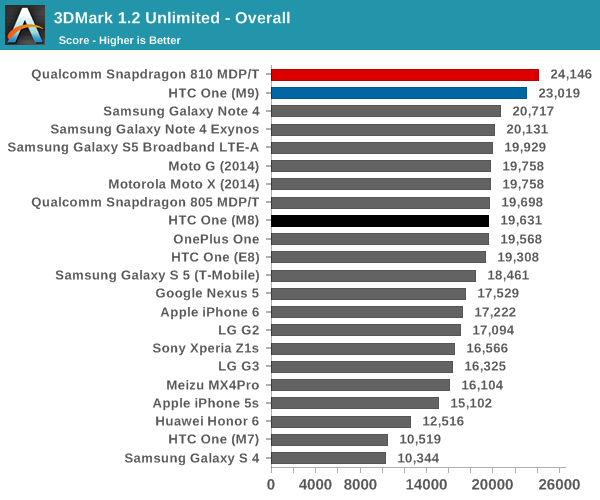

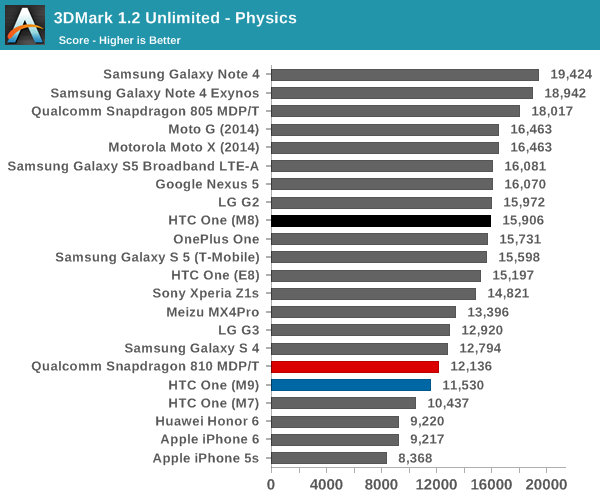
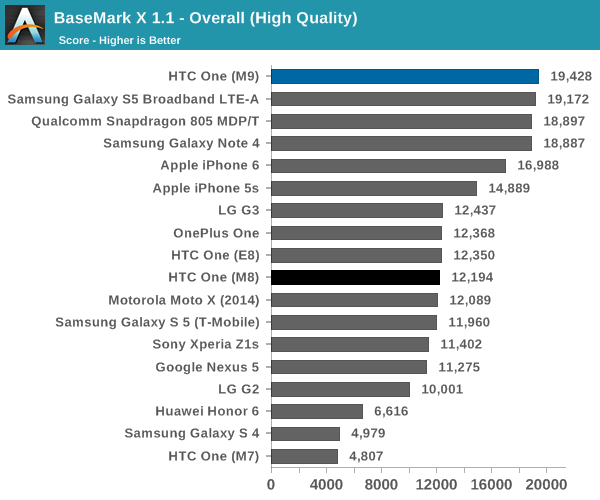
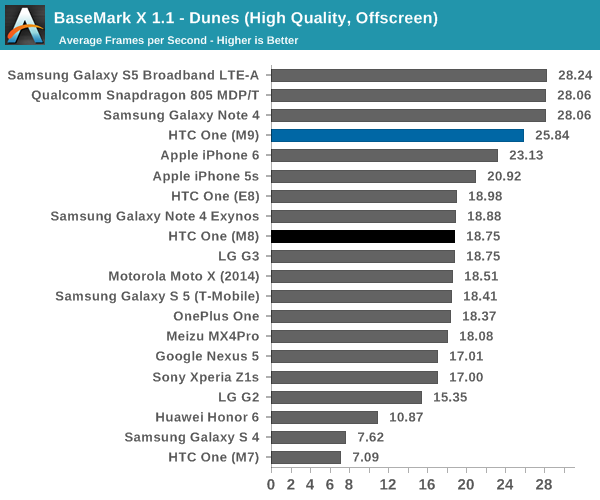
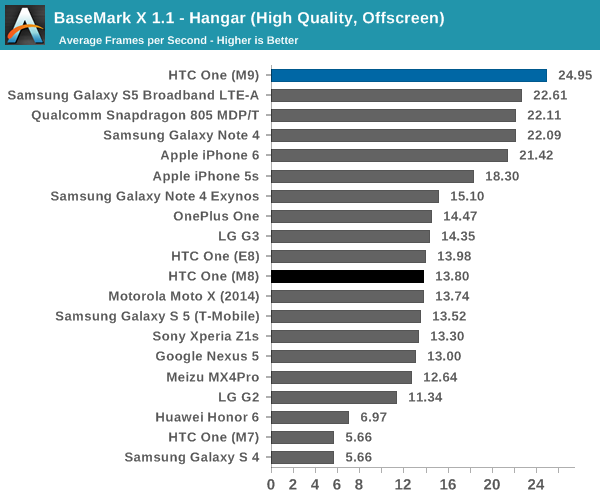

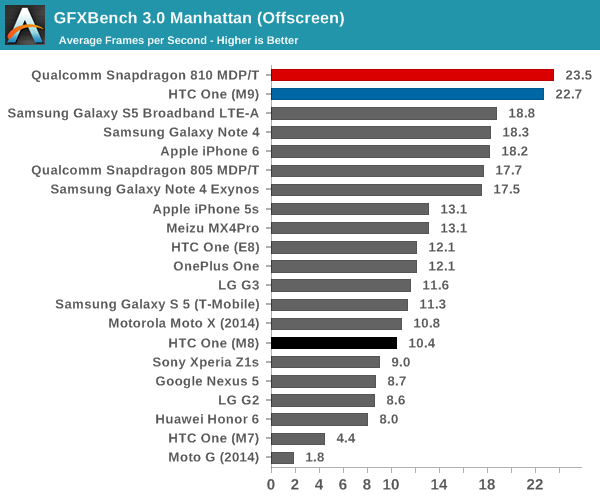
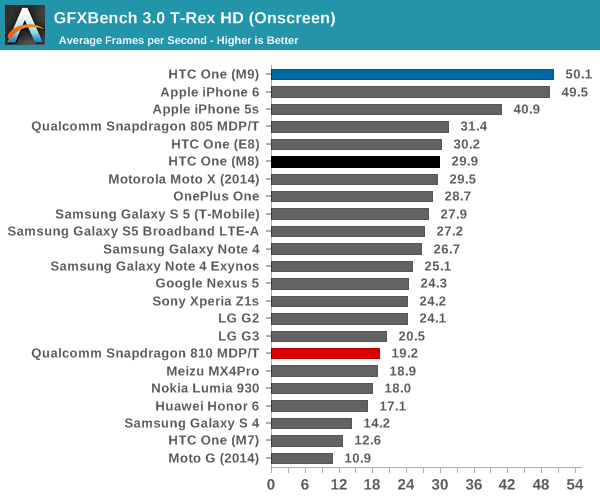
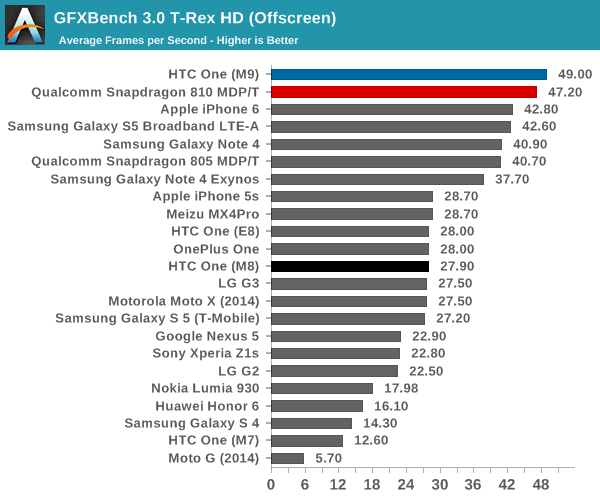
As one can see, the One M9 manages to deliver results that basically mirror what we saw with Qualcomm’s MDP/T, although there is some variance that can be seen. HTC did make the right call here with the 1080p display as we see a pretty massive jump in performance from the One M8 to the One M9 in GPU performance, and using a 1440p display would have eaten away most of these gains. I suspect that the hit to GPU performance with 1440p displays will be mostly compensated for by the next generation of SoCs, but for now I’m still not sure that it makes sense to push such a resolution on a phone.
NAND Performance
Storage performance is often an unnoticed aspect of any device, but it can often force itself to the foreground when it’s insufficient. Probably the most famous case of this is the Nexus 7 (2012), which was really the first device that caused people to start to look closer at NAND performance. While we’re close to a better solution for storage testing, for now we can still look at Androbench to get a decent idea of relative storage performance, although this is nowhere near as extensive as our SSD testing.
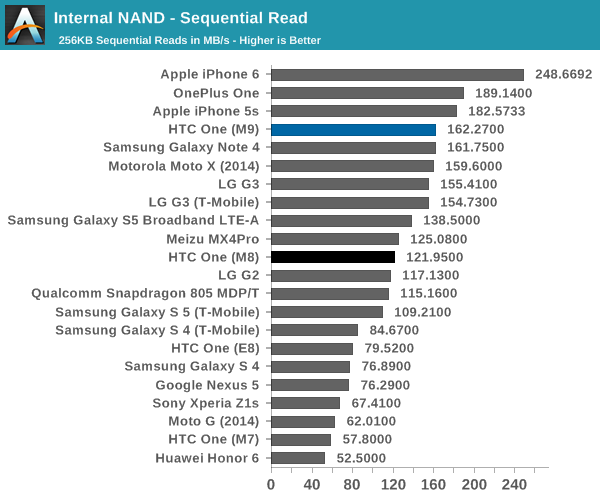
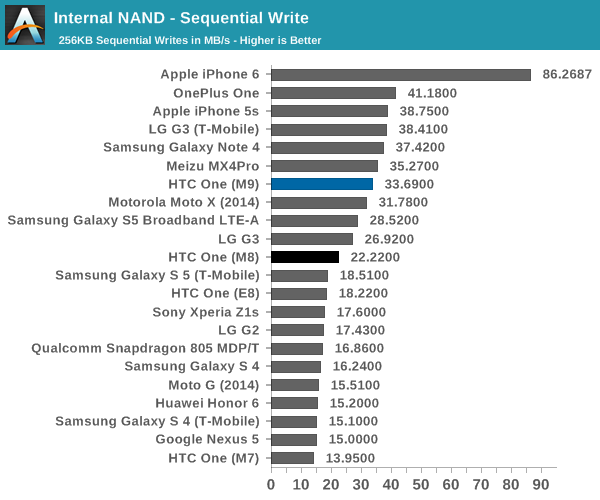
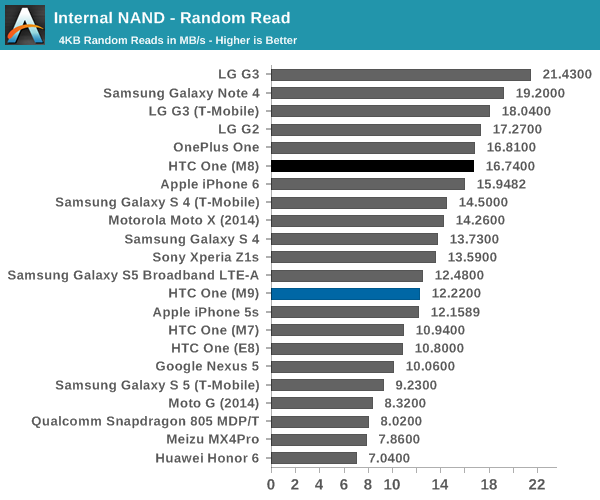
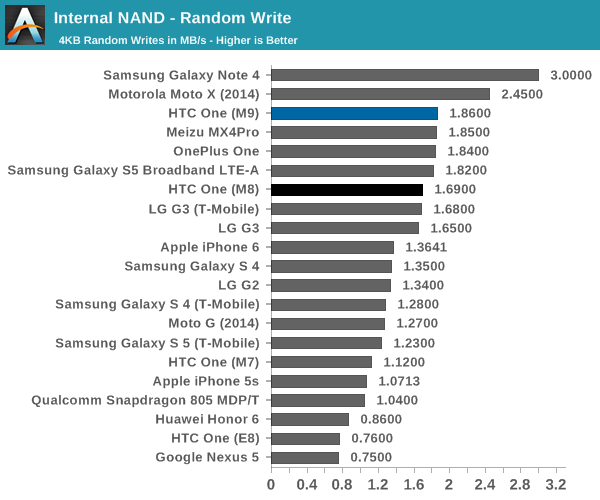
In this test, HTC does show some level of improvement over the previous generation but does regress a bit in the random read department. As far as I can tell, HTC is using Samsung’s eMMC solution here, with the model name BGND3R, as opposed to the One M8 which used a SanDisk eMMC IC. It's interesting to see how the One M9 still uses ext4 here, even though the Nexus 9 adopted F2FS. As far as I can tell, there seems to be a reason to adopting one filesystem over another but this reason is still unclear to me.










132 Comments
View All Comments
Snark Attack - Sunday, March 22, 2015 - link
while while while while while while whileSeriously Josh, you need to stop abusing that word. I've seen multiple instances of starting two sentences with while in several of your reviews. It's getting pretty tedious. I bet if I were to ctrl-f in other reviewer's articles, there will be significantly fewer matches.
Thanks for the review.
JoshHo - Sunday, March 22, 2015 - link
While abuse has been alleviated to some extent, thanks for the feedback.FunBunny2 - Monday, March 23, 2015 - link
of course, my textual abuse is somewhat, of course, less lethal.TedKord - Monday, March 23, 2015 - link
It's always sad to see someone addicted to abusing a word. There is help out there, but the first step is admitting you have a problem, and wanting to be helped.Just say "NO". (But not too often, or you could get hooked on it)
Quidam67 - Monday, March 23, 2015 - link
I enjoy reading the comments section for anandtech reviews because they attract a higher; more educated form of whiny b!tches.jjj - Sunday, March 22, 2015 - link
Any ETA for more on SD810? At least a vague range.Anyway, guess not much to say here, it's all bad. Maybe a drastic price cut would change the picture.
testbug00 - Monday, March 23, 2015 - link
What's the problem with the 810? It behaves exactly how an SoC that draws at least 7W running only the CPU at max clocks would...peterfares - Sunday, March 22, 2015 - link
HTC done messed upcandrews74 - Sunday, March 22, 2015 - link
I wonder if the issues with software are something that running a different OS would solve. I have two M8s one with Android and the other with Windows Phone 8.1 and the Windows phone version gets better battery life by about 24 hours in standby. When I use it for testing web sites, the Windows version also last longer and supports more JavaScript features than Chrome, its almost scary compared to desktop IE.I guess we will see if MSFT makes good on their promise that any Android phone can run Windows Phone 10 and see what this thing can do.
sprockkets - Sunday, March 22, 2015 - link
Interesting, yet arstechnica found that the power save mode on the android version beats the windows version. YMMV.